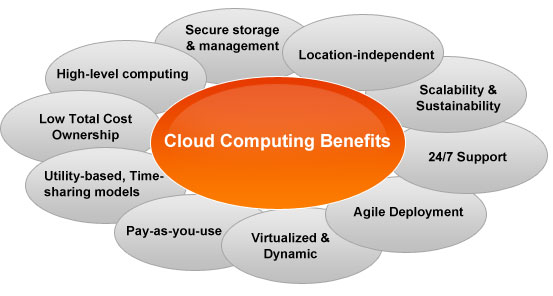7 Factors That Can Undermine The Benefits of Cloud Services
3 min read

Experts believe automation, low costs and data redundancy are three of the biggest factors behind the success of cloud computing. But what majority of the people don’t know are the steps that businesses take, while moving to the cloud. These lead them toward disasters.
Here are 7 steps that should be avoided while transferring to cloud services:
1- Failing to Recognize IDs
Enterprise identity management is one of the safest ways of making sure that only the right people can use the cloud. Cloud services give open access to anyone from the client company, but enterprises should put checks on this.
Chief Security Officer of Axway, John Theilens says, “While it is easy to start this way, failing to integrate with enterprise IMS will leave the organization open to leaks, policy violations, and ultimately the inability to secure the cloud,”
Same is the use with companies implementing IaaS to address customer complaints about the IT department’s unresponsiveness.
2- Not Listening to the Demands for Secure APIs
Cloud offers a range of opportunities to the company’s customers to reach its services, enabled through the API. Basically, an API brings a company’s internal services and capabilities in reach of the customers.
But the passwords of APIs used by developers to access such services are keys to the system, and losing this key can result in serious harm to the company. Hence, they need to deploy strong security measures ?ensuring passwords do not get lost.
3- Increased Dependence on Cloud Providers
Like every other technology, even the cloud is continuously evolving and with constant improvement, companies have made the older versions ? available on a smaller scale to everyone. As John Theilens explains, “This is revolutionizing approaches to the cloud all the way to on-premise infrastructure.”
Given the scenario, organizations like TOSCA and CMP have started offering tools that guarantee that zero dependence of clients on the provider. Experts believe that companies should adopt these new tools to gain greater control over their cloud, and switch to the new vendor ? when the need arises.
4- Becoming Risk Free and Less Accountable
Thinking that switching to cloud services completely transfers your risk and accountability is not the brightest idea. Clients demand the cloud provider to keep its operations transparent, and absorb any rising risks.
Theilen explains, “You don’t want to sign up on the cloud provider, taking on all the risk.” It is certain that cloud providers cannot own your risk better than you can. Therefore, it’s better if a company dissipates its risk across various available zones.
5- Not Ensuring IT and Security Involvement During the Sign Up Contract
While implementing cloud services, it is best to involve the IT department during the transition. Though implementation of the cloud, even without the IT department is a piece of cake, cloud services bring with them a host of new security and performance issues. In this scenario, the best practice is to bring on board the IT department to avoid any internal conflicts.
6- Over Valuing the Security Measures Provided by Cloud
At times companies are so attracted toward the perks and privileges in the cloud that they don’t even question the security measures provided by the provider. They themselves presume that since the vendor is serving multiple clients, it is well equipped in providing security measures as well. Cloud providers generally attend to the basic in-house security measures and outsource the higher levels of security to a third party. But, it is important that security clauses are included in the contract. Jerry Irvine, Chief Information Officer, Prescient Solutions and member of the National Cyber Security Task Force, in this regard says, “You have to need the service provider to maintain specific security functions, document security tasks, and provide copies of all security policies and practices as well as security reports”.
7- Over Estimating Cost Savings
Often cloud providers only state their basic costs to have a better comparative position as with their competitors. This often leads the companies to underestimate the costs associated with the cloud. Irvine explains, “Depending on the type of cloud service being offered (SaaS, IaaS, PaaS), the number of resources required internally may not change at all. In fact, many of our clients who engage in cloud computing have no decrease in the internal IT department at all.”
The outsourcing by companies of their applications and systems to the cloud certainly appreciates associated costs, which shall be taken into account.






